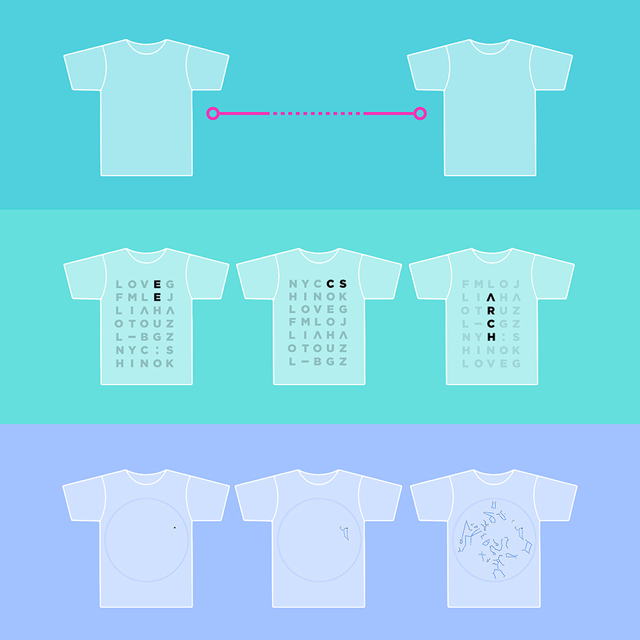Fashion has always been a good way to break the ice. Spot someone at a party wearing something you like; go up and compliment them on it. Easy. But a new project called Social Textiles wants to turn fashion into a social network you can wear, alerting you when a friend is nearby, and lighting up around the like-minded to attract their attention.
This is the latest joint from MIT's Tangible Media Group and Fluid Interface Group, a design team that between them has given us everything from reinvented power cords to shapeshifting displays. The Social Textiles team started with a group of MIT students—Viirj Kan, Katsuya Fujii, Judith Amores, and Chang Long Zhu Jin—who wanted to try to solve a simple problem: how can tech make social media more tangible?

"If you think about it, our Facebook and Twitter profiles reach and even impact thousands of people every day, but it doesn't feel like it," Kan, representing the group, tells me. "But while the way we represent ourselves in social media is intangible, what we wear isn't. We wanted to see if we could merge the two to create social catalysts."
Right now, Social Textiles is a T-shirt, although theoretically, it could be any type of clothing. On the front of the shirt is a pattern printed in thermochromatic ink, with a thin circuit membrane underneath. Pairing to your smartphone thru Bluetooth, the Social Textile shirt detects when other people are in the room who share your interests, and sends a buzz through the shirt's collar when you're within 12 feet of each other.
But it goes one step further than that. If you actually touch the person you're simpatico with, by clapping them on the shoulder or shaking their hand, a capacitive sensor in the T-shirt can tell. Then, the Social Textiles shirt lights up, revealing symbols on the front of the shirt showing what you and your new friend have in common.
"Depending on how the ink pattern is designed, Social Textiles can communicate anything you want," Kan explains. "It could tell two people who have just met that they both like jazz, or that they both go to MIT." Going further, it could tell two people who just met if they were a match on OKCupid, were compatible organ donors, or more. The technology that drives the T-shirt is cheap and affordable; what Social Textiles could communicate is only limited by the designer working with it.
For many, fashion is already something of a way of communicating to others that you're part of a secret club. Social Textiles could take that concept to the next level, buzzing and flashing on the club floor when a like-minded club kid bumps into you. But the Social Textiles team also sees their invention being useful at more structured events like freshman meet-and-greets, company picnics, industry conferences, and so on. After all, meeting new people is hard enough. Why not let your clothes do some of the work for you?
You can read more about the Social Textiles project here.
[Images: via Social Textiles/MIT's Tangible Media Group and Fluid Interface Group]